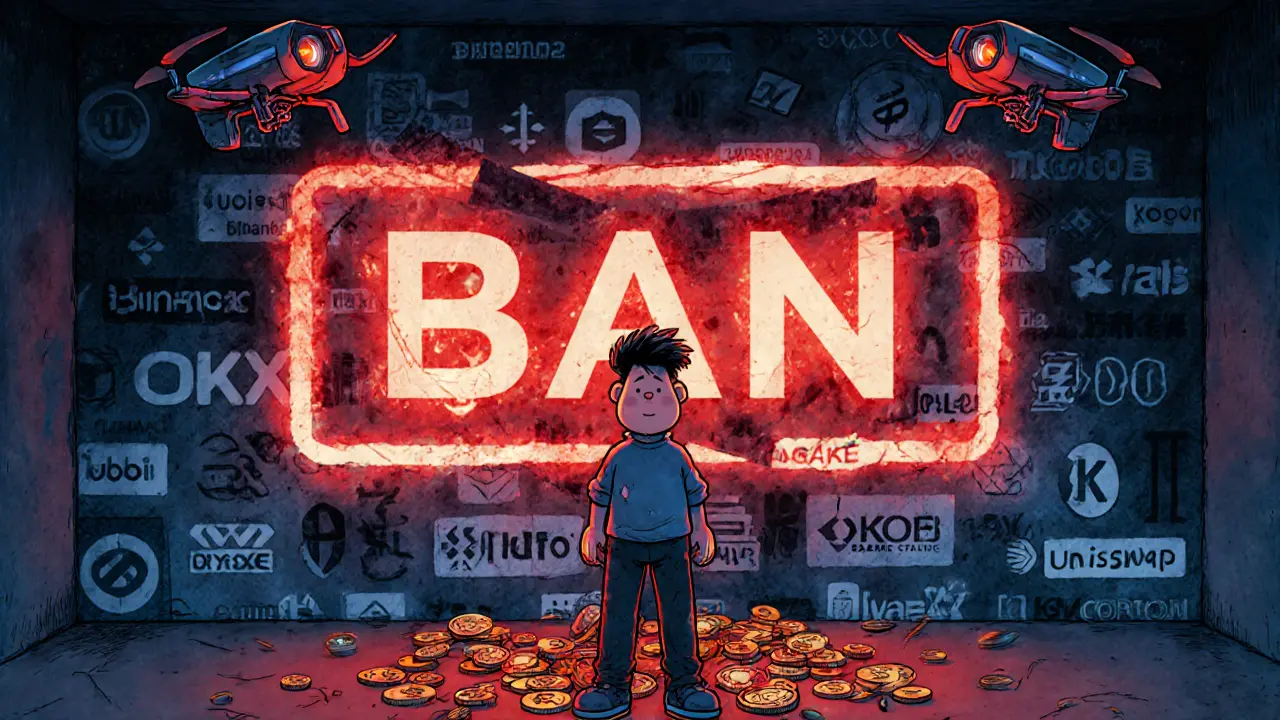Chinese Crypto Restrictions: What’s Banned, Who’s Affected, and How It Shapes the Market
Chinese crypto restrictions, a sweeping set of government policies that banned cryptocurrency trading, mining, and financial services tied to digital assets. Also known as China’s crypto crackdown, these rules began rolling out in 2013 and hit full force by 2021, turning China from the world’s biggest crypto hub into one of the strictest regimes on earth. This wasn’t just a policy tweak—it was a total reset. The government didn’t just limit crypto; it erased its legal footing in banking, exchanges, and even mining operations.
At the heart of this move was financial sovereignty, the state’s drive to control money flow and prevent capital flight. Also known as capital controls, this concept explains why the People’s Bank of China moved so aggressively. Crypto, with its decentralized nature, threatened the state’s grip on currency movement. Meanwhile, crypto mining, a massive energy-hungry industry centered in Xinjiang and Sichuan, was seen as a drain on national power grids and a tool for unregulated wealth creation. By 2021, all mining rigs were shut down, and hundreds of data centers were dismantled overnight. Even crypto trading, once booming on platforms like Huobi and OKX, was outlawed for domestic users. Exchanges had to move offshore, and Chinese citizens were blocked from accessing foreign platforms through banking restrictions and app bans. But here’s the twist: people still use crypto. Not legally, but through peer-to-peer trades, offshore wallets, and hidden channels. The ban didn’t kill demand—it just made it underground.
These restrictions didn’t just affect China. They sent shockwaves through global markets. Bitcoin mining shifted to the U.S., Kazakhstan, and Nigeria. Crypto exchanges scrambled to relocate headquarters. And regulators everywhere watched closely—what China did became a blueprint for other countries thinking about control over digital money. Today, Chinese crypto restrictions remain one of the most extreme examples of state power over decentralized technology. Yet, despite the ban, China continues to invest heavily in its own digital currency, the e-CNY, proving the government isn’t against digital money—it just wants to own it.
Below, you’ll find real stories and breakdowns of how these rules play out in practice: from fines in Vietnam to frozen assets in the Philippines, all shaped by the same global pressure China created. These aren’t isolated cases—they’re echoes of a single, powerful policy.
